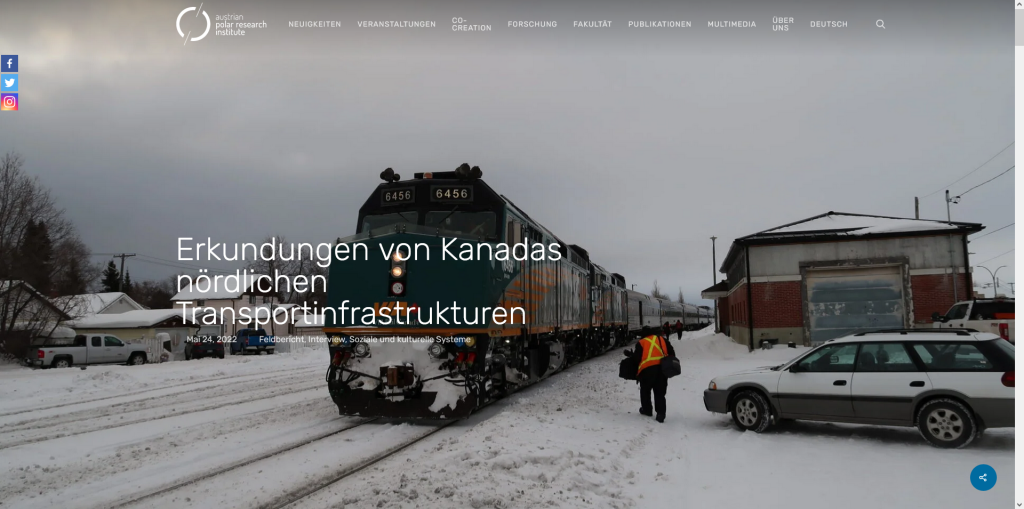Budka, P. (2024). Notes on the transformation of a railway in Northern Manitoba, Canada. Paper at Vienna Anthropology Days 2024, Vienna, Austria: University of Vienna, 23-25 September.
Co-chairing of Panels “Building Tomorrow: Exploring Infrastructures and Futurities”, 25 September.
Introduction
On a chilly day in February 2022, I boarded the Via Rail Canada train in Winnipeg for my inaugural journey to Churchill, a community of 870 individuals situated at the Hudson Bay in Northern Manitoba, Canada, which is inaccessible by road. I was the only passenger in the sleeper car for this 48-hour journey. Four other passengers were siting up front in the economy car. A train attendant told me that the COVID-19 pandemic has significantly reduced the number of people using public transportation, particularly during the winter months when ice roads offer a cost-effective travel option in Manitoba. Leaving the province’s capital behind, we rode along the endless fields of grain of Canada’s prairie, now all covered in ice and snow. From time to time, the train stopped. One reason for that was to let freight trains pass. The railway companies always give priority to freight transportation. “That’s where the business is,” the train attendant explained during one of those stops.














